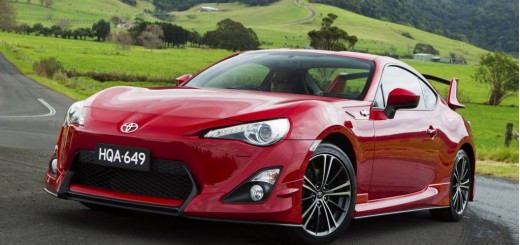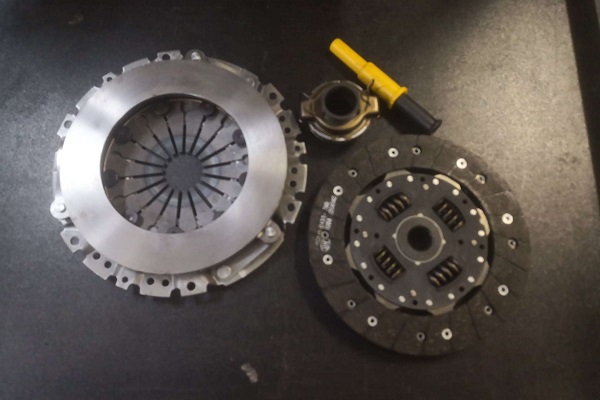Arguably one of the most popular American muscle cars, the Ford Mustang is truly a beaut. Whether you like Ford or not, the Mustang will always have a head-turning effect on those of us who can appreciate a truly amazing car.
According to the Ford Motor Company, there have been a total of six ground-up redesigns of the Mustang, hence the six generations of the Mustang.
The 1st Generation Ford Mustang
1964 – 1966
On the 9th of March, 1964, the first Mustang rolled off the assembly line – the start of a muscle car that will keep turning heads for over 50 years. Known as the 1964 ½ production, the Mustang shared a number of the Ford Falcon’s parts in order to keep production costs down.
With a 274.32 centimetre wheelbase and measuring 461.264 centimetres from bumper to bumper, Ford ran simultaneous commercials on three of the major networks of the time, a day before the Mustang would go on sale to the public. On April 17th, 1964, Ford sold over 22 000 Mustangs.
Goldfinger, the 1964 James Bond film starring Sean Connery, was the first picture to feature the Mustang.

The 1964 ½ was available in two models – the convertible and the coupe. In 1965 the Ford flaunted optional extras such as front disc brakes, GT equipment and trim package, and the 2+2 fastback body.

Carroll Shelby saw great potential in taking a Mustang and turning it into something spectacular – the GT 350. Taking the first one hundred 2+2 fastbacks with the K-code engines, Shelby made modifications.
Removing the rear seats, he added a fiberglass hood, 15 inch wheels, monster disc brakes in the front and a lower suspension.

In 1966 Ford added small modifications to these American muscle cars ranging to include a couple of trim tweaks, a limited colour variation and missing vertical and horizontal bars in the Mustang’s grille.
1967 – 1968
Facing competition from Plymouth (the Barracuda had been redesigned), Chevrolet (producing the Camaro) and Pontiac (producing the Firebird), Ford reacted with a larger Mustang flaunting a new body. This model also featured slightly exaggerated style features and was 5.08 centimetres longer.
The most noticeable change here was the over 300 horsepower V8. This bigger engine also meant that the front’s track suspension also had to be widened by 6.35 centimetres, delivering a more ‘stable’ car.

In 1968 more engine options became available. While the 95 horsepower 289 V8 engine was still an option to buyers, the other 289 engines were replaced by the 4.9 litre versions of the small V8 engine block. 220 Horsepower was produced by the two barrel 302, while the four barrel 302 produced 230 horsepower.
Another modification to these American muscle cars were the two seven litre big block V8 engines. These engines delivered 335 and 390 horsepower respectively.
1969 – 1970
1969 brought an even larger Mustang, the wheelbase however still remaining at 274.32 centimetres. Breaking some of the more traditional styling features, it boasted a sharper nose, four headlights and simpler grille, to name but a few examples.

More engine options were also available with the 1969 model including a 5.8 litre V8 and the 390. Two 248s were also offered in the form of the Cobra Jet (335 horsepower) and the Super Cobra Jet (360 horsepower).
A more luxurious option was available in the form of the coupe ‘Grande’ model, and for those that craved performance, the Mach 1 version of the 2+2 fastback was available. These Mach 1 versions had three engine options – the 428, 390 and the 351.
Born out of the need of a car that could compete in the SCCA Trans Am series against the Camaro Z28, the Boss 302 Ford Mustang had, among many other modifications, an optimised suspension and a 302 V8 engine with a horsepower of 290.

For the NASCAR stock car competition, Ford came up with the Boss 429, resulting in having to almost completely redesign the Mustang’s front suspension. Ford then opted to use the Torino in NASCAR. Only 859 Boss 429 fastback Mustangs were built during 1969.
1970 saw Ford returning some of the old style features of the Mustang, including going back to the original two headlights (instead of four). The 351 V8 engines were also now produced at the Cleveland plant instead of the Windsor plant, resulting in a slightly different design.
1971 – 1973
Not the most loved Mustang released, the 1971 model was 476.25 centimetres long with a 276.86 centimetre wheelbase. Engines in this model year included the 250 cubic inch delivering 145 horsepower and the 302 delivering 210 horsepower.
The two 351 engines (delivering 240 and 285 horsepower), the Cobra Jet delivering 370 horsepower and the Super Cobra Jet delivering 375 horsepower was available. The Boss 351 boasting a 351 V8 engine, delivering 330 horsepower, was also released in this year.
The 1972 Mustang year models were mostly the same as the 1971 models, but because of a change to compression ratios and net horsepower ratings, the 250 (V6) dropped to 98 horsepower, the 302 to 140 horsepower and all three of the 351s dropped to 163, 248 and 266 horsepower respectively.
By 1973, these American muscle cars suffered further emission regulations, the V6 dropped to 88 horsepower, the 302 dropped to 135 horsepower and the two remaining 315 engines reached just over 150 horsepower.
The 2nd Generation Ford Mustang
1974 – 1978
Selling well, the Mustang II was not without its faults. Smaller with a poorer handling, it also had a lower power. The 1974 Mustang II used the suspension and basic structure of the Falcon. This particular Mustang also had a 32.512 centimetre shorter wheelbase and a 31.75 centimetre shorter length than the 1973 Mustang. This model was offered without the V8 option and was available in a fastback hatchback and a notchback coupe.

1975 saw the return of the V8, but it only had a two barrel carburettor and catalytic converter, resulting in the Ford Mustang delivering a horsepower of 122. It was also in 1975 that the new MPG coupe was released.
The Cobra II package, which added a large rear spoiler to the Mustang II, was one of the most noticeable changes in 1976. The V8 134 horsepower engine coupled with a four speed manual transmission was also available during 1976.

1977, apart from a couple of trim changes and colours available on the Cobra II package, the Mustang II remained pretty much the same as its younger brother.
The King Cobra version was released in 1978 featuring a backward hood scoop and some revised graphics.
The 3rd Generation Ford Mustang
1979 – 1993
The 1979 Mustang model, which would later become used as a cop car, didn’t use the parts from a Pinto, but was instead built on a shortened chassis Ford’s Fairmont Fox. It was now 461.264 centimetres long and had a 274.32 centimetre wheelbase. This model also underwent a couple of style changes as well as interior changes, making it a roomier car.

Aside from the engines available with the Mustang II, Ford also added a turbocharged version. Later that same year, Ford brought back the 3.3 litre OHV straight six delivering 94 horsepower. 1979 also gave us the 6 000 Indy pace car replica fastbacks – one of the more desirable Ford Mustangs of 79.
1980 saw very few style changes but, under the hoods of these American muscle cars a lot changed. The 302 V8 engine was replaced by the more economical 255 small block V8.
In 1981, Mustangs featured five-speed manual transmissions as an optional as well as the T-top roof.
Making a comeback, the Mustang GT hatchback had, in 1982, a High Output 5 litre V8 with 157 horsepower.

Ford also released a Mustang not for sale to the public. The Mustang GT, intended for the California Highway Patrol, featured a V8 engine, four speed transmission and delivered 157 horsepower. Many law enforcement agencies bought these Mustangs up until 1993 when its production was discontinued.
The 1983 Mustang came with Ford’s new logo in the grille as well as numerous other alterations. Some of these changes included a newer version of the turbocharged 2.3 litre SOHC featuring electronic fuel injection.
In 1984 Ford launched the turbocharged Mustang SVO featuring bigger brakes as well as bigger tyres. 1985 saw the release of the new 5 litre V8 engine with the Mustang now reaching 210 horsepower.
In 1986 a new multi-port fuel injection is added to the V8 engine and the turbo charged I4 is dropped. 1987 saw the drop of the V6 engine and the GT saw a redesign in front lights as well as taillights. Other changes included turbine wheels and rear spoilers. The LX and GT models also boasted new interiors and improved dashboards.
During 1988 and 1989, the Ford Mustang models remained almost unchanged from the 1987 models. This was also Mustang’s 25th anniversary in which Ford decoded to celebrate by adding ’25 Years’ to the Mustangs produced between 17 April 1989 and 17 April 1990.
In 1991, the Mustang LX and the 5 litre Mustangs were offered with 16 inch wheels and carried through to 1992, with limited edition models being released.
The basic Mustang CT and LX remained unchanged for 1993 with Ford releasing a special edition SVT Cobra and a total of 107 track ready Cobra versions (known as the Cobra R) was also manufactured during this year.

The 4th Generation Ford Mustang
1994 – 1998
With the styling themes of past Mustang models, the 1994 Ford Mustang brought back the dashboard design seen between the 1964 ½ and the 1973 models. The side scallop was back and only two body styles were available – the convertible and the 2 door coupe featuring a semi-fastback roof.
ABS was optional in these models with four wheel disc brakes used. Only two engine choices were available – The Mustang had a fuel-injected 3.8 litre V6 with 145 horsepower and the Mustang GT had a 5 litre V8 featuring a flutter intake manifold and delivering 215 horsepower.

The 1995 models of these American muscle cars remained almost unchanged from its ’94 predecessor. The Mustang GTS was also introduced in this year.
The Mustang GT’s engine was replaced with the Ford’s 4.6 Litre SOHC V8 in 1996 delivering 215 horsepower, while the 3.8 litre V6 engine was re-rated to a 150 horsepower. There were still two transmission choices available – the five speed and the four speed manual transmission.
Changes were also made to the SVT Cobra. This Mustang model featured an all-aluminium DOHV 32 valve version of the 4.6 litre engine, delivering 305 horsepower.
The 1997 Mustangs featured new upholstery, security and colours. 1998 saw modifications made to the Cobra ranging to include an increased output for the 4.6 litre V8 engine and a redesign of the five spoke wheels.
1999 – 2004
The 1999 Ford Mustang featured a revised rear and front look coupled with sharply creased fenders. These models also got the special 35th anniversary badge on their front fenders. Revisions were also made to the 3.8 litre V6 engine (now delivering 190 horsepower) as well as the 4.6 litre V8 engine used in the GT (now delivering 260 horsepower).

The 2000 year models underwent some minor changes, mostly carrying over from the 1999 models. It was also in 2000 that a limited number of Cobra R models were manufactured.

The Cobra made its return in 2001, but it was not what Mustang fans were waiting for. The special Bullitt Mustang CT coupe was coming. Inspired by Steve McQueen’s Bullitt, this model is inspired by 1968 Mustang 390 GT.
2002 saw little change, with only the Bullitt wheels being an added optional to the Mustang.
2003 was an exciting year for Mustang fans. A more powerful Cobra (delivering 390 horsepower) and a limited edition, eye tantalizing, Mach 1 (delivering 305 horsepower) was released.

Turning 40 in 2004, a 40th anniversary badge was added to all 2004 models with optional packages available.
The 5th Generation Ford Mustang
2005 – 2014
The 2005 Ford Mustang used the DEW98 platform instead of the Fox platform, with its style finding roots in the 1967 to 1969 models. Its interior also drew inspiration from the sixties models boasting aspects including the round hub of the steering wheel and round air vents.
An enhanced 4.6 litre V8 GT is also released and was available in either manual or automatic.
In 2006 a panel was released featuring a total of 125 different coloured lights and the Mustang GT is offered with 18 inch wheels. In 2007 the Shelby GT 500 is launched as well as a special ‘Warriors in Pink’ edition, aimed at helping to raise funds for the Susan G. Komen race.
In 2008 the 9 millionth Mustang is sold and, in 2009, the Mustang celebrates its 45th anniversary.
2010 was the year the Mustang was restyled with more muscular features. These features ranged to include sequential turn signals and power dome hoods.
The Coyote 5.0 litre V8 is released 2011 and, in 2012 the Boss 302 makes a return.
In 2013 the Shelby GT 500 is launched, flaunting a 5.8 litre supercharged V8 engine delivering 662 horsepower.

The 6th Generation Ford Mustang
2015 – Present
Celebrating its 50th anniversary in 2014, the Ford Motor Company displays its brand-spanking new 2015 Mustang Convertible.
If you are in the market for irresistible American muscle cars, Junk Mail is the place for you. With a number of classic cars for sale, you might just find the Ford Mustang of your dreams.








Awesome
I am looking for a ford mustang please phone on 072 646 7804
Grate cars.I want one.